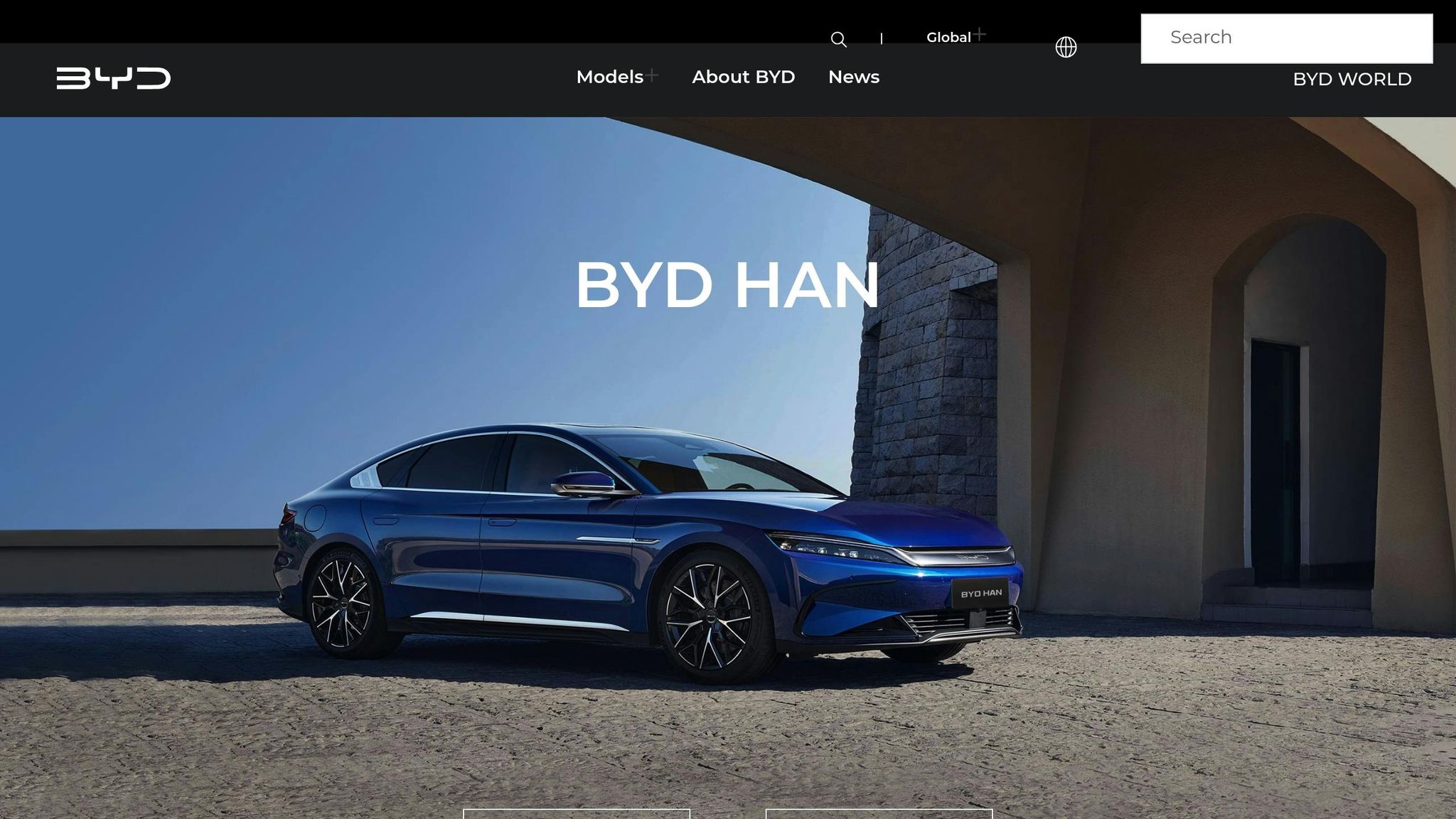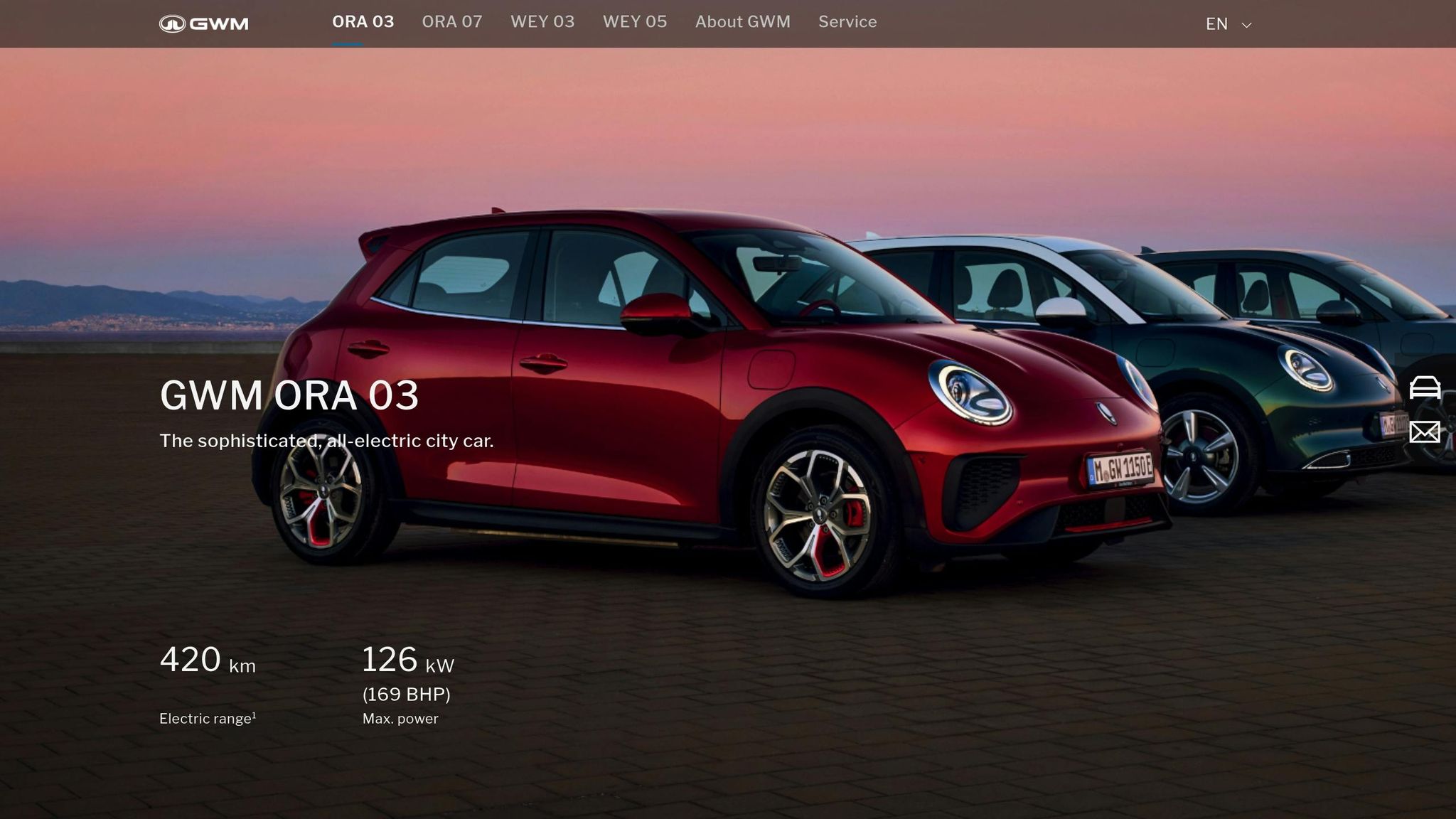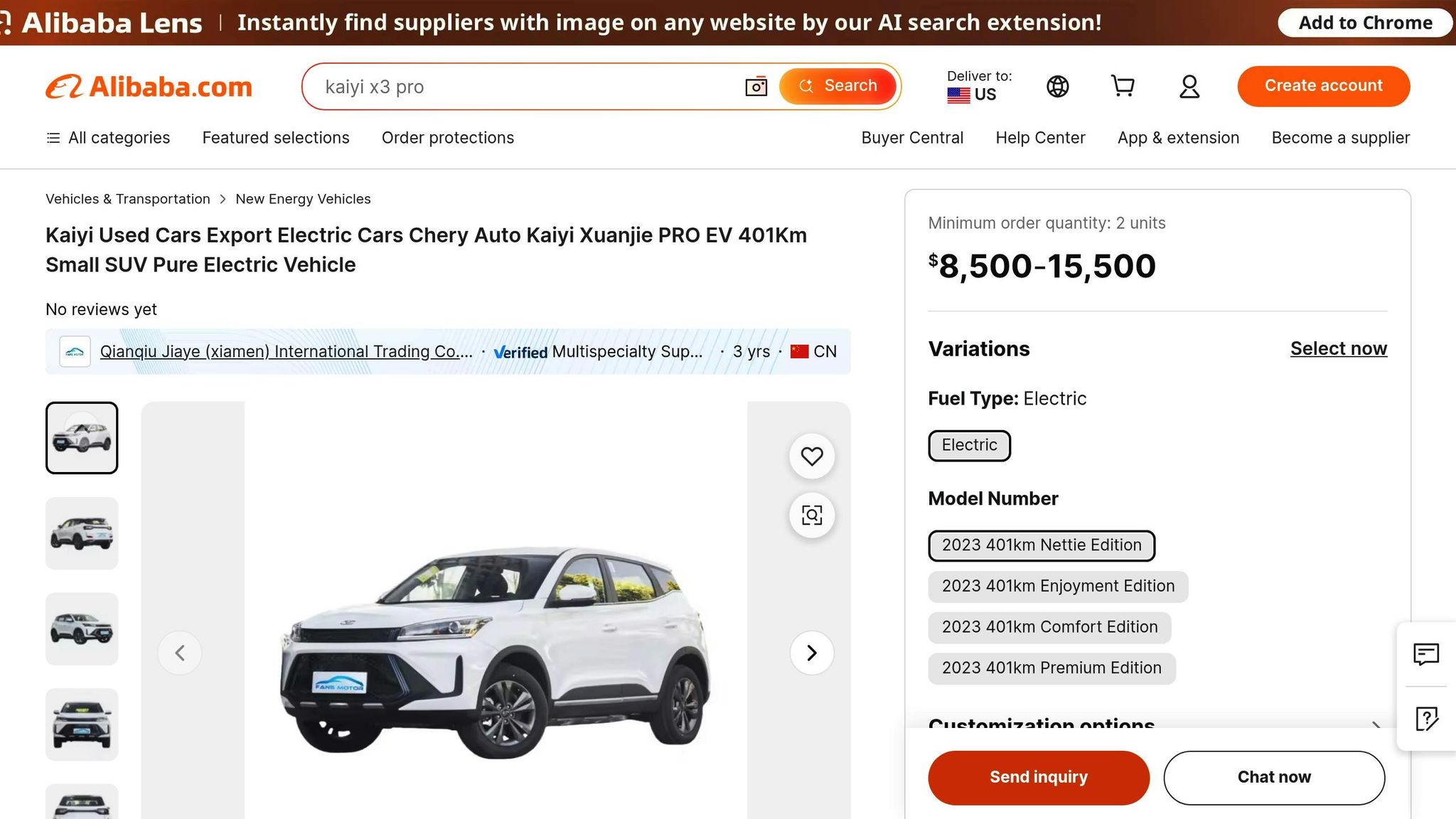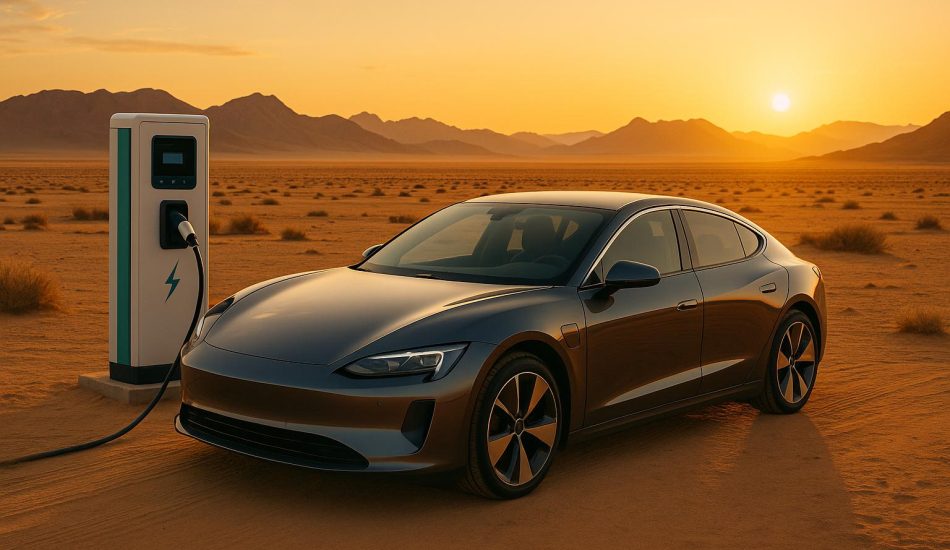
Zimbabwe’s electric vehicle (EV) market is becoming more accessible thanks to reduced import duties and an increasing supply of affordable used EVs. If you’re considering switching to an EV, here are some of the most budget-friendly options:
- Nissan Leaf (2017–2025): Starting at $11,000, this reliable option offers a range of 150 miles with its 40 kWh battery. It’s ideal for city driving and short commutes.
- Mazda MX-30 EV: Priced around $11,600, this compact EV is perfect for urban use, with a range of 100–124 miles.
- BYD Song EV: A spacious SUV with a 250-mile range, priced between $20,000–$28,000.
- GWM ORA 03: A budget-friendly option with modern features, offering a range of 193 miles, priced at $20,000–$28,000.
- Tesla Model 3 (used): Available for $25,000–$30,000, this EV combines long-range capability (220 miles) with advanced technology.
- Kaiyi Xuanjie PRO EV: With a projected range of 200–250 miles, this model is priced at $18,000–$25,000.
Key Takeaways:
- Cost Savings: EVs are cheaper to run than gas-powered cars, especially when paired with solar charging systems.
- Import Duties: Zimbabwe reduced EV import duties to 25%, making EVs more affordable.
- Challenges: Limited charging infrastructure and electricity shortages can be mitigated with home-based solar systems.
For those in Zimbabwe, EVs now offer a practical, cost-effective alternative to traditional cars, with options for every budget and driving need.
What to Consider When Buying an Electric Car in Zimbabwe
Making the switch to an electric vehicle (EV) in Zimbabwe can be a smart choice, but it requires careful planning to avoid unexpected costs and ensure a smooth ownership experience.
Import Duties and Tax Structure
EVs imported into Zimbabwe are subject to a 15% VAT. When calculating the total cost of an EV, it’s essential to include this tax along with any applicable import duties. These costs can significantly impact affordability, so factoring them in early will help you compare different models more accurately.
New vs. Used Vehicle Options
In Zimbabwe, the vehicle market is dominated by used imports, with nearly 95% of annual registrations coming from countries like Japan and the UK. Brand-new cars are often out of reach for most buyers due to high price tags and limited financing options. However, the growing availability of used EVs – such as second-generation Nissan LEAFs with 40 kWh or 62 kWh batteries and even pre-owned Teslas – provides more affordable alternatives. This trend makes used EVs a practical choice for many Zimbabwean buyers.
Charging Infrastructure and Power Challenges
Zimbabwe faces ongoing electricity shortages and frequent rationing, largely due to its reliance on imported power. In 2023, the country spent $180 million on electricity imports, with projections suggesting this could rise to $220 million in 2024. These challenges can complicate traditional EV charging.
That said, the growing adoption of solar energy is providing a viable solution. Many EV owners are turning to home-based charging setups powered by solar panels and battery storage systems. For example, Centragrid’s completion of a 25 MWp solar PV plant near Harare in January 2025 highlights Zimbabwe’s commitment to renewable energy. Installing a solar system at home can ensure reliable charging, even during grid outages.
Range and Driving Needs
Consider your daily driving patterns and the distances you typically travel. Zimbabwe’s road network varies widely, and long distances between cities can make range anxiety a real concern. Urban drivers in Harare or Bulawayo may have different needs compared to those traveling between regions. With limited charging options outside major cities, it’s wise to choose an EV with a range that can comfortably handle your longest trips, plus a safety buffer.
Long-term Cost Savings
While the upfront costs of EVs may seem daunting, they offer long-term savings, especially when paired with solar charging systems.
"As the prices of solar panels and batteries are now lower than ever, these will be useful in the quest to reduce operational expense for business and offer a much better value proposition than buying and servicing diesel generators and then continuously buying diesel to fuel them."
– Remeredzai Joseph Kuhudzai, CleanTechnica
This makes EVs a cost-effective alternative to traditional vehicles, particularly for businesses looking to cut operational expenses.
Maintenance Advantages
EVs generally require less maintenance than traditional vehicles. With fewer moving parts, they eliminate the need for oil changes, experience less brake wear due to regenerative braking, and are less prone to mechanical issues. This is especially beneficial in Zimbabwe, where accessing parts and skilled technicians for conventional vehicles can be challenging. However, it’s still crucial to ensure that you have access to qualified EV technicians and replacement parts, particularly for less common models.
Exploring Financing Options
Since traditional financing for EVs is limited in Zimbabwe, buyers often turn to alternative methods. These include pooling resources with family or securing business financing if the vehicle will be used commercially. The lower operating costs of EVs can justify the higher initial investment, making them an appealing choice even when conventional financing isn’t an option. Carefully evaluating these options will help you find the most cost-effective EV for your needs in Zimbabwe’s unique market.
1. Nissan Leaf (2017–2025)

The Nissan Leaf has become a go-to option for Zimbabwean buyers looking to dip their toes into the world of electric vehicles. Models from 2017 to 2025, in particular, are widely available for import from Japan and have earned a solid reputation for dependability.
Here’s why the Nissan Leaf stands out for buyers in Zimbabwe:
Price (USD)
For budget-conscious buyers, the Nissan Leaf offers great value. Second-generation models imported from Japan are priced competitively, making them an appealing alternative to traditional fuel-powered cars. On top of that, a duty reduction has made importing these vehicles even more affordable, further boosting their appeal.
Battery Range (km)
The Leaf comes with two battery options to suit different driving needs. The 40 kWh battery is perfect for daily commutes, while the 62 kWh battery provides a longer range for extended trips. This flexibility addresses one of the main concerns for EV owners in Zimbabwe – managing longer journeys in areas where charging infrastructure is still developing.
Charging Options
The Nissan Leaf’s charging system is designed with convenience in mind. It supports both Level 1 and Level 2 charging, making it adaptable to various power setups. For Zimbabwean owners, pairing the Leaf with solar power systems can be a smart way to manage charging needs, offering a more flexible and eco-friendly solution.
Suitability for Zimbabwean Roads
The Leaf thrives on urban roads and highways, offering a smooth and efficient ride on paved surfaces. Its regenerative braking system adds an extra layer of efficiency, especially on hilly routes. However, it’s worth noting that the car’s low ground clearance makes it less ideal for rough or unpaved terrains, limiting its use to primarily tarred roads.
With its proven reliability, straightforward maintenance, and cost-effective pricing, the Nissan Leaf remains a practical and economical choice for Zimbabweans looking to transition to electric vehicles. Its combination of affordability, efficiency, and adaptability makes it a standout option in the growing EV market.
2. BYD Song EV

The BYD Song EV stands out as a practical choice for those seeking a spacious and versatile electric SUV. Made in China, this vehicle combines functionality and affordability, making it particularly appealing to buyers who want a balance of utility and cost-efficiency.
Price (USD)
In Zimbabwe, the BYD Song EV is positioned as an affordable option in the electric SUV market. Its pricing makes it a compelling choice for those who need extra space without stretching their budget.
Battery Range (km)
While detailed battery range information specific to Zimbabwe isn’t readily available, the Song EV is designed to meet the demands of urban and suburban drivers. For daily commutes and errands, its range should suffice under typical local conditions. For precise specifications, it’s best to consult local dealerships.
Charging Time
The BYD Song EV supports standard AC charging. Charging times will depend on the available infrastructure, but the vehicle remains a practical option for routine use.
Suitability for Zimbabwean Roads
With its SUV build and elevated seating position, the BYD Song EV is well-suited to handle various road conditions. Whether you’re navigating city streets or dealing with less predictable roads outside urban areas, its design ensures a comfortable and capable driving experience. Consider your usual routes to determine if it fits your needs.
3. GWM ORA 03

The GWM ORA 03 is positioned as a budget-friendly electric vehicle (EV) option. However, many of its key specifications are yet to be confirmed. If you’re considering this model, it’s essential to check with local dealers for the most up-to-date information.
Price (USD)
The price for the GWM ORA 03 isn’t fixed and may vary. Be sure to contact authorized GWM dealers in Zimbabwe for the latest pricing details.
Battery Range (km)
Details about the battery range haven’t been disclosed yet. To get accurate information, reach out to local dealers.
Charging Time
Charging time specifics are currently unavailable. You’ll need to confirm this with the dealers.
Suitability for Zimbabwean Roads
Information on how well the GWM ORA 03 performs on Zimbabwean roads is scarce. For a clearer picture, consult local dealers who may provide insights based on real-world conditions.
4. Kaiyi Xuanjie PRO EV

Let’s take a closer look at the Kaiyi Xuanjie PRO EV, another budget-friendly electric vehicle option. However, there’s limited information available about this model in Zimbabwe, making it tricky to evaluate its practicality.
Price (USD)
At the moment, pricing details for the Kaiyi Xuanjie PRO EV in Zimbabwe are unavailable. To get accurate and updated pricing, it’s best to contact local dealerships directly.
Battery Range (km)
Unfortunately, there’s no confirmed data on the battery range of this model. This makes it difficult to determine whether it’s suitable for daily commutes or longer trips within Zimbabwe.
Charging Time
Details about charging times, whether for standard AC or fast DC charging, are not currently provided. This lack of information adds to the uncertainty about the vehicle’s convenience for local use.
Suitability for Zimbabwean Roads
There’s no documented performance data for the Kaiyi Xuanjie PRO EV on Zimbabwean roads. With road conditions varying from smooth urban streets to rugged rural paths, it’s hard to gauge how well this EV might handle the terrain without specific insights or user feedback.
Due to these significant information gaps, it’s essential to consult with authorized dealers and gather more details before making any decisions about this model.
sbb-itb-99e19e3
5. Tesla Model 3 (used)
The Tesla Model 3 has emerged as a standout option in Zimbabwe’s growing market for used electric vehicles. Traditionally, many Zimbabwean buyers lean toward 8-year-old luxury cars like the BMW 3/5 Series or Mercedes C/E Class, but interest in electric alternatives like the Model 3 is steadily rising.
Price (USD)
Used Tesla Model 3s imported from Japan are becoming more accessible in Zimbabwe. Prices depend on factors like the car’s age, condition, and mileage. Recent reductions in import duties have made these vehicles even more appealing. This affordability, combined with a solid battery range, makes the Model 3 a compelling choice for buyers.
Battery Range (km)
The Tesla Model 3 offers a battery range that suits both city driving in Harare and longer trips between towns. The exact range depends on the model year and battery configuration, but it remains a practical option for daily commutes and intercity travel.
Charging Time
Tesla’s fast-charging technology is a key convenience feature, and many Zimbabwean EV owners are pairing their charging systems with solar power to address the country’s electricity challenges. This combination ensures reliable charging and greater usability. Local adaptations to charging setups have made the Model 3 a practical and efficient choice for Zimbabwean drivers.
Suitability for Zimbabwean Roads
Tesla vehicles, including the Model 3, are already navigating Zimbabwean roads with positive feedback from local owners. While detailed data on their performance on rugged rural roads is limited, owners report that the Model 3, when properly adapted, performs well. Additionally, the expansion of solar power installations – both rooftop and utility-scale – along with battery storage solutions, is helping bridge electricity gaps and encouraging more widespread EV adoption.
6. Mazda MX-30 EV

The Mazda MX-30 EV has carved out a niche in Zimbabwe’s growing market for used electric vehicles. With its balance of affordability and reliability, it aligns well with the local trend of importing pre-owned cars, particularly from Japan. This trend is largely driven by financial constraints and the appeal of vehicles around 8 years old, which are more accessible for many buyers.
Price (USD)
For those considering the MX-30 EV, export listings for used 2021 models from Japan show Free on Board (FOB) prices ranging between $11,100 and $12,100. Once you factor in shipping, a reduced 25% import duty, and 15% VAT, the total landed cost becomes competitive with used petrol-powered Mazdas or Toyotas. This pricing makes the MX-30 EV an attractive option for budget-conscious buyers.
Battery Efficiency
While detailed range figures for the MX-30 in Zimbabwe aren’t readily available, its compact design and battery setup make it ideal for shorter urban trips. For cities like Harare, where daily commutes are relatively short, this EV could be a practical and efficient choice.
Charging and Local Adaptation
One of the MX-30 EV’s advantages is how well it fits into Zimbabwe’s growing reliance on solar energy. Many EV owners in the country are turning to distributed solar power for charging, which helps address the challenges posed by inconsistent electricity supply.
Suitability for Zimbabwean Roads
Beyond affordability and efficiency, the MX-30 EV’s compact build lends itself to urban driving. While specific performance data for Zimbabwean roads is scarce, its design suggests it can handle the demands of city environments effectively, making it a smart pick for urban dwellers.
Price and Feature Comparison Table
Below is a detailed table to help you weigh pricing and features, making it easier to decide which EV suits your needs.
| Model | Price (USD) | Range (miles/km) | Seating | Charging Time (Level 2/Fast) | Key Features | EV24.africa Available |
|---|---|---|---|---|---|---|
| Nissan Leaf (2017) | $11,000+ | 150/241 | 5 | 6–8h / 40min | ProPilot Assist, e-Pedal, proven reliability | Yes |
| Nissan Leaf (2025) | $14,950 | 150/241 | 5 | 6–8h / 40min | Latest tech, warranty coverage | Yes |
| BYD Song EV | $20,000–$28,000 | 250/402 | 5 | 7–9h / 40–60min | Long range, advanced infotainment | Yes |
| GWM ORA 03 | $20,000–$28,000 | 193/311 | 5 | 6–8h / 40–50min | Digital cockpit, modern design | Yes |
| Kaiyi Xuanjie PRO EV | $18,000–$25,000 | 200–250/320–400 | 5 | 7–9h / 45–60min | Smart connectivity, competitive range | Yes |
| Tesla Model 3 (used) | $25,000–$30,000 | 220/354 | 5 | 8–10h / 30–40min | Autopilot, over-the-air updates | Yes |
| Mazda MX-30 EV | $11,600 | 100–124/160–200 | 5 | 9h / 36min | Sustainable materials, compact design | Yes |
This table strikes a balance between price, range, and features, helping you find an EV tailored to your needs. For those on a tighter budget, the Nissan Leaf (2017) and Mazda MX-30 EV stand out as the most affordable, starting at $11,000–$11,600. While the Mazda MX-30 offers a compact design and eco-friendly materials, the Leaf outshines it with a longer range of 150 miles, making it a better fit for extended commutes.
If range is your top priority, the BYD Song EV leads the pack with an impressive 250 miles, priced between $20,000 and $28,000. For a slightly lower price range, the Kaiyi Xuanjie PRO EV offers a solid 200–250 miles along with modern features, making it a versatile choice.
Most models require 6–10 hours for Level 2 charging, but fast-charging options can reduce this to as little as 30 minutes, depending on the vehicle. Keep in mind that total costs include shipping, a 25% duty, and 15% VAT. The good news? EV24.africa takes care of these logistics, ensuring a smoother process.
All these options are well-suited to Zimbabwe’s growing EV market and infrastructure, offering something for every type of driver.
Benefits of Choosing an Affordable EV in Zimbabwe
Affordable electric vehicles (EVs) in Zimbabwe offer a mix of financial and environmental perks that are hard to ignore. For starters, EVs cut down on fuel costs by swapping expensive imported fuels for cheaper, locally produced electricity – often generated from solar power. In fact, electric vehicles can travel two to three times farther on a dollar’s worth of energy compared to traditional gas-powered cars. With infrastructure steadily improving, EVs are becoming a more practical and budget-friendly option for Zimbabwean drivers.
Recent policy shifts have also made EV ownership more accessible. For example, models like the 2017 Nissan LEAF are now priced competitively with used petrol-powered cars. This comes at a crucial time, as Zimbabwe’s fuel import bill is projected to hit $1.62 billion in 2024 – a staggering figure that accounts for more than 25% of the country’s total import expenses when combined with car imports. By choosing an EV, drivers not only save money but also contribute to reducing the nation’s reliance on costly fuel imports.
The environmental benefits are equally compelling. EVs help cut Zimbabwe’s dependence on fossil fuels while encouraging the adoption of renewable energy. Many EV owners are pairing their cars with solar-plus-battery systems, which not only reduce the need for diesel generators as backup power but also improve urban air quality. These personal choices align with a broader push toward cleaner energy solutions in the country.
Charging infrastructure is also expanding across major cities and highways, making EV ownership more convenient. For everyday use, most owners can easily charge their vehicles at home using a standard 110-volt outlet, gaining a range of 40–60 miles overnight. Additionally, public charging stations are becoming more common, easing concerns about range limitations for longer journeys.
Beyond personal savings and environmental impact, the shift to EVs offers a path toward greater energy independence for Zimbabwe. By investing in vehicles powered by local solar energy, the country can redirect funds typically spent on fuel imports toward domestic infrastructure projects. This transition also opens the door to job creation in the renewable energy sector, providing long-term economic benefits alongside the environmental gains.
Conclusion
Zimbabwe’s electric vehicle (EV) market is steadily evolving, with models like the Nissan Leaf, BYD Song EV, and GWM ORA 03 showing that going electric can be both practical and cost-effective. These vehicles are making it easier for drivers to embrace a cleaner, more efficient way of getting around.
When evaluating an EV, think about how it fits into your daily routine and whether local service and support are readily available. The financial advantages go beyond the purchase price – EVs often come with lower fuel and maintenance costs, making them a smart long-term investment. This growing variety of options highlights a shift in Zimbabwe’s automotive landscape.
For those in Zimbabwe considering the switch, the market now offers affordable choices tailored to different needs. Instead of focusing solely on the latest features, prioritize a model that aligns with your lifestyle and ensures access to reliable service and parts. The move toward electric mobility is gaining momentum, and these accessible options make it easier than ever to take the leap.
FAQs
What challenges come with owning an electric car in Zimbabwe, and how can they be solved?
Owning an electric vehicle (EV) in Zimbabwe isn’t without its hurdles. Limited charging infrastructure and high upfront costs are two of the main challenges. But there’s progress on the horizon. Charging networks are gradually being expanded, especially in cities, which is making EV ownership more convenient.
To tackle the cost barrier, the government has introduced measures like reduced import duties and financing options to help make EVs more affordable. These steps are paving the way for electric cars to become a more practical and budget-friendly option for many Zimbabweans in the future.
How does the cost of importing an electric car to Zimbabwe compare to purchasing a gas-powered vehicle locally?
Importing an electric car to Zimbabwe comes with a wide range of costs, influenced by factors such as import duties, shipping charges, and the car’s make and model. While the initial price tag of electric vehicles is typically higher than that of gas-powered cars, they can help save money over time through reduced fuel and maintenance expenses.
Before making a decision, it’s essential to dive into Zimbabwe’s import regulations and calculate the total cost, including all taxes and fees. Comparing this figure to the price of locally available gas-powered vehicles can give you a clearer picture of which option aligns better with your budget and long-term plans.
How can EV buyers in Zimbabwe ensure they have reliable charging options?
EV buyers in Zimbabwe looking for reliable charging options should begin by exploring the availability of charging stations, particularly in larger cities such as Harare and Bulawayo, where the infrastructure is gradually advancing.
If feasible, installing a home charging station is a smart move. It offers a convenient and steady solution for everyday charging. Keeping track of updates on new charging networks and expansions can also make planning longer journeys much easier and less stressful.




